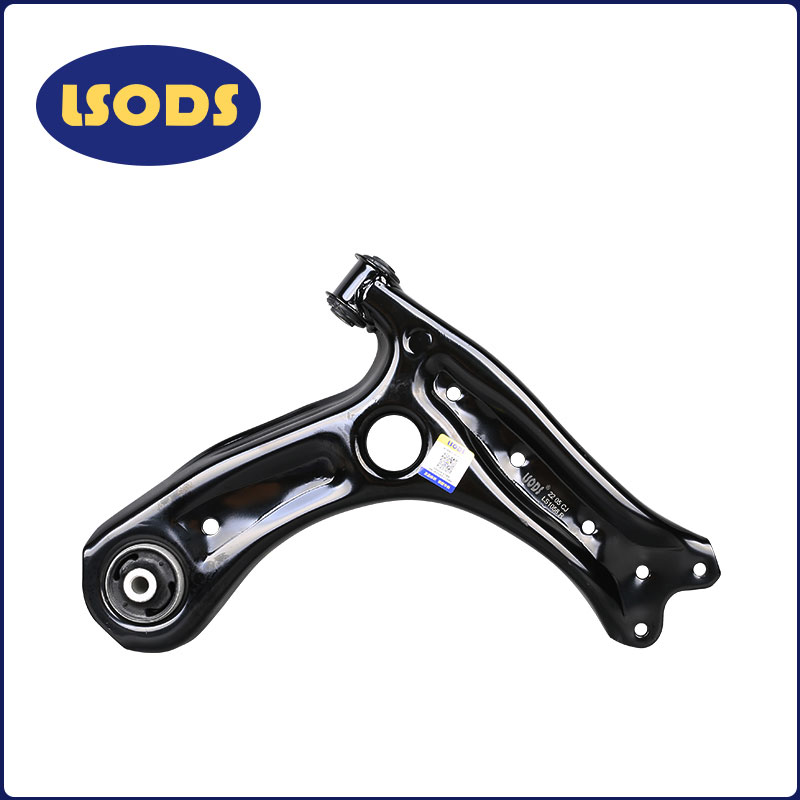A control arm, also known as an A-arm or wishbone, is a crucial component of a car's suspension system. Its primary function is to connect the vehicle's chassis or body to the wheel hub, allowing for controlled movement and maintaining proper alignment of the wheels. Control arms are typically found in the front suspension of most vehicles and play a vital role in providing stability, handling, and comfort while driving. Here are the key functions and roles of a control arm in a car:
Suspension Attachment: Control arms are attached to the vehicle's frame or chassis at one end and the wheel hub or spindle at the other end. This connection helps in supporting the weight of the vehicle while allowing the wheel to move up and down in response to road irregularities, providing a smoother ride.
Wheel Alignment: Control arms are designed with specific angles and lengths to ensure that the wheels are properly aligned. Proper wheel alignment is crucial for maintaining vehicle stability, even tire wear, and safe handling.
Absorption of Road Shocks: When the vehicle encounters bumps, potholes, or other road imperfections, the control arms play a role in absorbing and dampening the shocks. This helps in preventing the transfer of excessive vibrations and impacts to the vehicle's body and occupants.
Control of Wheel Movement: Control arms help control the movement of the wheel during cornering, acceleration, and braking. They are designed to maintain the ideal geometry of the suspension system, allowing the wheel to move vertically while minimizing lateral movement, which can affect steering and handling.
Suspension Geometry: Control arms are part of the complex suspension geometry that contributes to the vehicle's stability and handling characteristics. Properly designed control arms ensure that the tires maintain optimal contact with the road surface, which is essential for safe and predictable driving.
Control arms come in various designs, including upper and lower control arms, and they are often made of durable materials like steel or aluminum. Over time, control arms can wear out or become damaged due to factors such as wear and tear, harsh driving conditions, or accidents. When control arms fail, it can lead to issues like poor handling, uneven tire wear, and compromised safety, so it's essential to monitor their condition and replace them as needed to maintain the vehicle's performance and safety.

 English
English  简体中文
简体中文  Español
Español  Português
Português  русский
русский  Français
Français  日本語
日本語  Deutsch
Deutsch  tiếng Việt
tiếng Việt  Italiano
Italiano  Nederlands
Nederlands  ภาษาไทย
ภาษาไทย  Polski
Polski  한국어
한국어  Svenska
Svenska  magyar
magyar  Malay
Malay  বাংলা ভাষার
বাংলা ভাষার  Dansk
Dansk  Suomi
Suomi  हिन्दी
हिन्दी  Pilipino
Pilipino  Türkçe
Türkçe  Gaeilge
Gaeilge  العربية
العربية  Indonesia
Indonesia  Norsk
Norsk  تمل
تمل  český
český  ελληνικά
ελληνικά  український
український  Javanese
Javanese  فارسی
فارسی  தமிழ்
தமிழ்  తెలుగు
తెలుగు  नेपाली
नेपाली  Burmese
Burmese  български
български  ລາວ
ລາວ  Latine
Latine  Қазақша
Қазақша  Euskal
Euskal  Azərbaycan
Azərbaycan  Slovenský jazyk
Slovenský jazyk  Македонски
Македонски  Lietuvos
Lietuvos  Eesti Keel
Eesti Keel  Română
Română  Slovenski
Slovenski  मराठी
मराठी 





